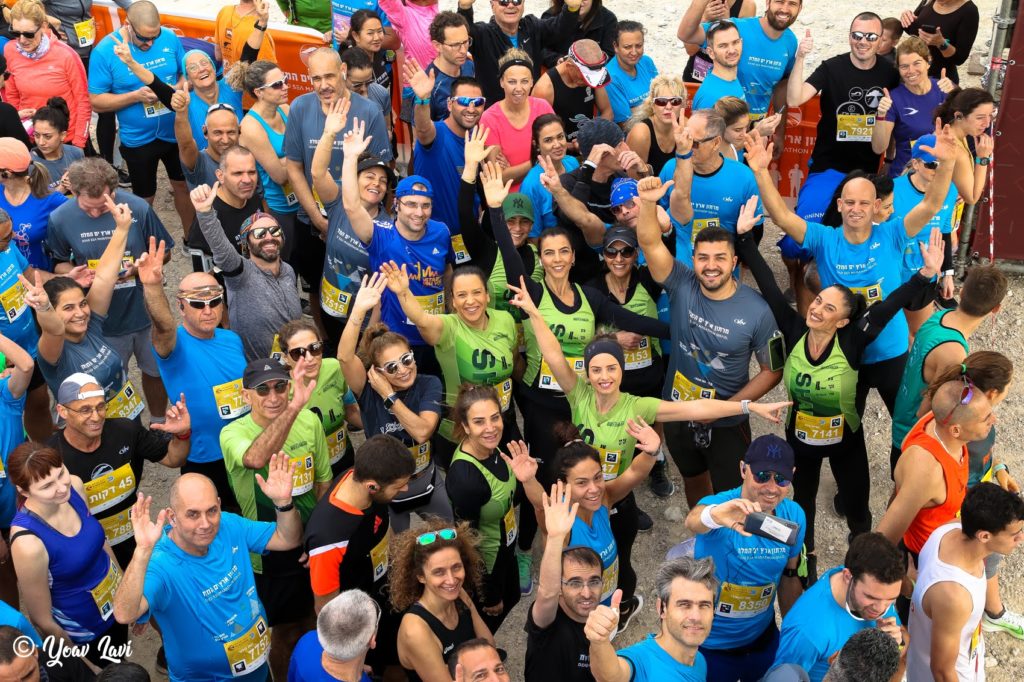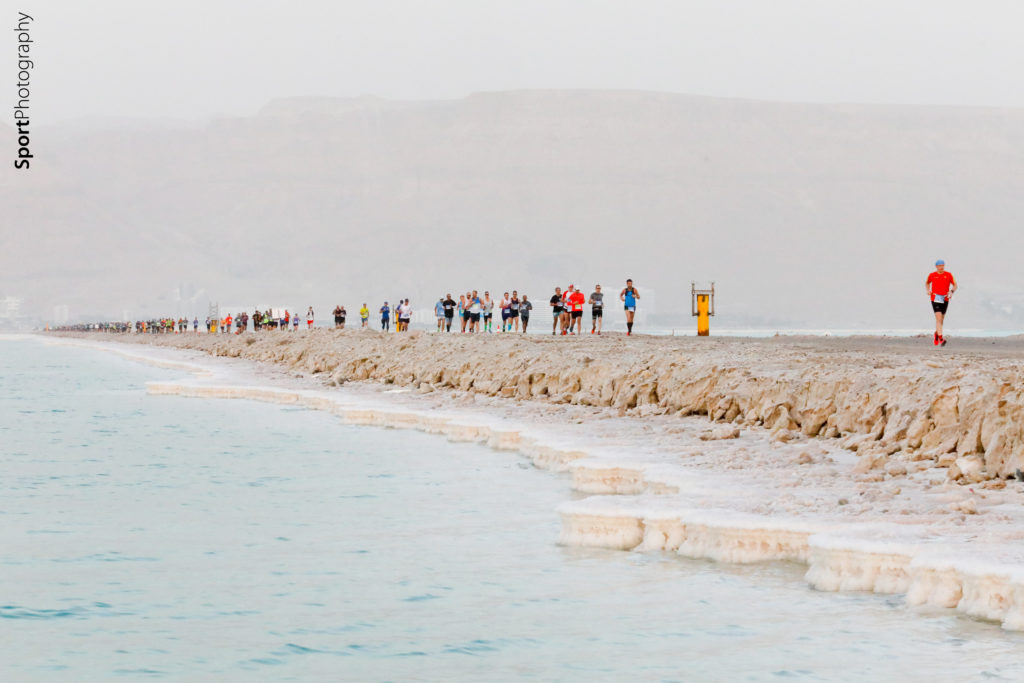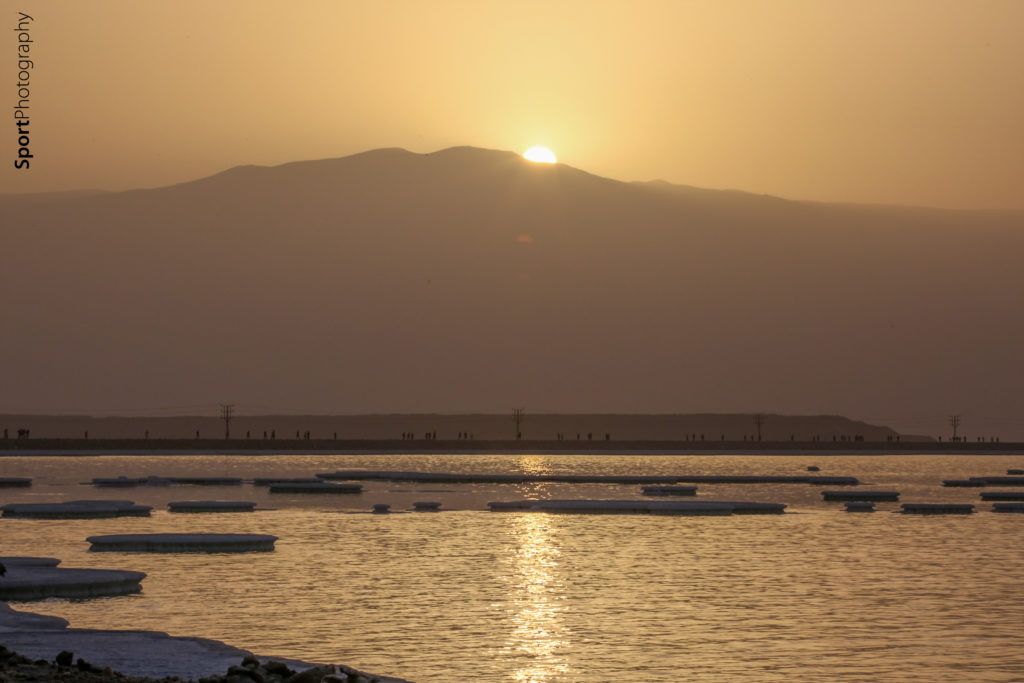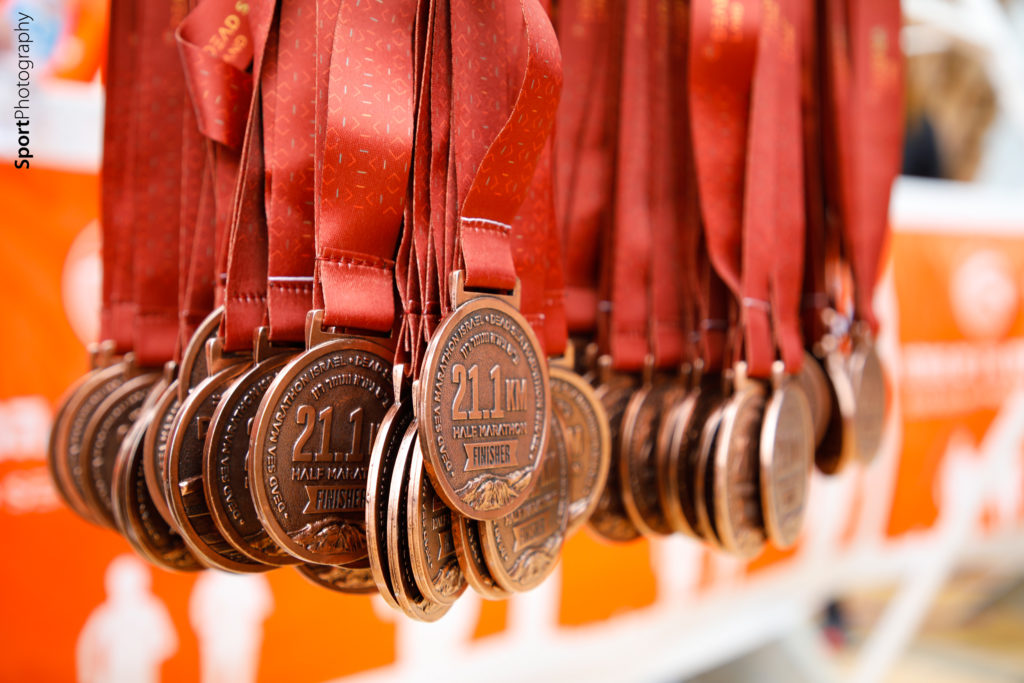By: Karen Kwan
Photo Credits: Sport Photography and Yoav Iavie
With five weeks notice, I found myself in Ein Bokek, jet-lagged but excited to run the Dead Sea Half-Marathon; the Marathon is the marquee event, which takes place at the beginning of February, but I chose to do the 21.1k distance since I was running the race with essentially no base fitness after taking a break after running the Istanbul Marathon in November.
The drive from Tel Aviv takes about a couple of hours and I dozed off only to wake up to the fantastical view of golden desert mountains and that’s when it truly sunk in what an epic race I had in store. And now a couple of weeks after the race, it’s still sinking in what a phenomenal and unique race this is—one every runner who’s into destination races should add to their bucket list.

This 2020 edition of the Dead Sea Marathon is the second year this race has been held (it was developed based on a former race in the Ein Gedi area), and while there are kinks that need to be ironed out (long lines at kit pickup, for one, and I can’t seem to search for my chip time in the results), there are so many things the race has going for it, that it is well worth investing your vacation time and money into adding this to your personal race roster.
Some 4,000 participants took place this year in the race (200 in the 50k, 250 in the marathon, 1,700 in the half-marathon, 1,400 in the 10k, and 300 in the 5k) and of the 4,000, some 400 runners traveled internationally for it. Here’s what I along with those 4,000 participants got to enjoy.
ONE: The beauty of the race course. The blue water of the Dead Sea, although not hospitable to flora or fauna, is simply breathtaking. Add the white salt formations, which as a Canadian you may in a running daze confuse with snow and icebergs, and you’ll feel as though you are running on another planet. The half starts off in a demilitarization zone with Jordan, and you can view the mountains in Jordan as you set off on the course on a salty road into the Sea. The course actually includes running on the border with Jordan and I discovered after the race that it is key to stick to the course at all times, because there are possibly some land mines on parts of the sides of the road.

TWO: The challenging route. As a road runner, I found the trail conditions to be quite challenging. The course starts on salt and then progresses to gravel and eventually packed dirt road, with the final few kilometres on the paved promenade. You’ll find yourself working on finding your footing on the rocky road for much of the race, or weaving to different sides of the route to where the dirt is packed more firmly so that you can work less on finding stable footing. And although mostly flat, there is a significant hill at about the 16k mark of the half-marathon race as you make your way up a ramp and turn to get onto the promenade along the Dead Sea.

THREE: The additional mental challenge of this race. For 95 percent of this race, there are no spectators. And in certain sections, while you have the Dead Sea on your left, on the right is rather barren desert, which can feel bleak. Thankfully, I found myself surrounded by a decent number of runners most of the race, so that kept it from feeling desolate. If you love working on your mental game, then this race will deliver. Besides your surroundings, the weather itself can be unpredictable, presenting another factor to juggle on race day. This year the temperature was about 18 Celsius (and was hot but then cool and breezy), but It can also be much colder or much warmer, so it’s important to be prepared by packing a wardrobe of gear so that you have options for race day.

FOUR: The bragging rights of running at the lowest point on Earth. Running at altitude is challenging; and yet I didn’t personally notice the benefits of the opposite scenario (the Dead Sea sits at 430 metres below sea level). Most of the research I’ve come across focuses on exercising at altitude, however this studyfrom 1996 looked at the effects on a certain anterior pituitary hormones and cortisol levels when exercising at low altitude. The main physical difference I noticed? The thin layer of salt (more than just the usual from perspiration) that I was covered with after crossing the finish line. In chatting with the race director, he noted that you’re exposed to less UV radiation being 430 metres below sea level, and added that the air has 2 percent more oxygen, which can make a big difference while running.
FIVE: Everything you can treat yourself to after the Dead Sea Marathon. Immediately after the race, you’ll find treats like halva, pita and hummus and the freshest, juiciest oranges in the finish area. Plus, of course, you can soak your body in the healing waters of the Dead Sea, as well. Your best plan for this destination race is to add several days of vacation on the back end of your trip. Nearby, you’ll find Masada, an ancient fortress in the Judean desert. Then Jerusalem is about an hour’s drive away and you can immerse yourself into the history and sites named in the Bible. Tel Aviv is an easy and inexpensive bus ride from Jerusalem and there you’ll find gorgeous beaches and the historic city of Jaffa. In both cities, if you’re a foodie, it’ll feel like you’ve hit the jackpot; from the mouthwatering quick bites (think sabich and hummus spots) along with upscale restaurants where you get a spread of mezes to start (we recommend Santa Katarina). Israel’s mediterranean cuisine is amongst the best food we’ve ever enjoyed while traveling at both restaurants and the famous shuks or markets, where you’ll find piles of nuts, fresh produce, halva, breads and more to fuel you well.
Psst: By the way, if you’re someone who enjoys back-to-back races and have a wealth of vacation time, the Tel Aviv Marathon is held three weeks after the Dead Sea Marathon so you can scratch off two destination races in one trip to Israel.








